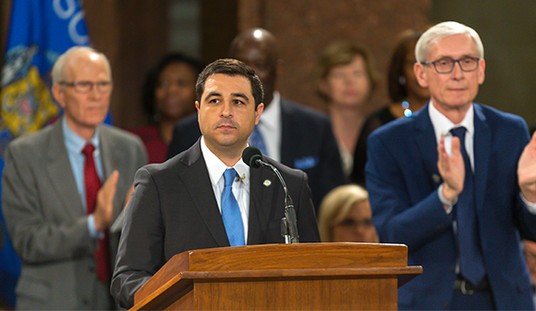That proved to be a wise move for him, as were his strategists' decisions to run heavy ad campaigns against Mitt Romney and to build an even more effective turnout machine in target states.
But it proved to be less than helpful to his party. Democrats did gain two Senate seats thanks to clueless Republican candidates and Republicans' failure to produce better turnout.
But Democrats got beaten badly in races for the U.S. House and state legislatures. That's clear when you compare the number of House Democrats after this year's election with the number of House Democrats after 2008.
Democrats came out of the 2008 election with 257 seats in the House, well above the majority of 218. That enabled a tough Speaker, Nancy Pelosi, to squeeze out majorities on unpopular measures like the stimulus package, cap and trade, and Obamacare.
Two of the three were big liberal policy victories (cap and trade went nowhere in the Senate). But the Democratic Party paid a price in 2010 -- and kept paying in 2012.
Democrats have won or are currently leading in 201 seats in the House. (All these numbers could change slightly in final counts.)
Between 2008 and 2012, they gained seats in only three states: Delaware, where a popular Republican ran for the Senate in 2010; Maryland, thanks to Democratic redistricting; and California, where a supposedly nonpartisan redistricting commission was dominated by Democrats.
The reapportionment process following the 2010 Census cost Democrats some seats because their strong states had relatively little population growth. They have five fewer seats in New York, for example.
The reapportionment effect was strengthened because the 2010 backlash against Democrats gave Republicans control of redistricting in Michigan, Ohio and Pennsylvania, all of which lost seats, and North Carolina, which stayed the same.
Recommended
As a result, in the 113th Congress, as compared to the 111th, there will be three fewer Democrats from Michigan, six fewer from Ohio, seven fewer from Pennsylvania and four fewer from North Carolina.
Democratic losses were greatest in the South, which gained seven seats from reapportionment. There will be 22 fewer Southern Democrats and 29 more Southern Republicans in the House next year than there were in 2009.
Another way to look at it: 123 of 201 House Democrats will be from the Northeast, the West Coast, Hawaii and Illinois. Only 23 are from the Midwest outside of Illinois and only 42 from the South.
Obama was able to build his electoral vote majority thanks to big Democratic majorities from core constituencies concentrated in these states, which gave him 207 electoral votes.
But the concentration of blacks, Hispanics and gentry liberals means there are fewer Democratic votes in the suburbs, the countryside and the geographic heartland. The Obama campaign strategy concentrated on turning out core voters. That left House Democrats short of the votes they needed elsewhere.
In state legislative races, Democrats also rebounded from 2010, but fell far short of the losses they sustained then. They went into the 2010 election with 53 percent of state senators across the country and 56 percent of state lower House members. (Nebraska elects its one legislative chamber on a nonpartisan basis.)
Democrats came out of the 2012 election with only 46 percent of state senators and 48 percent of state lower House seats.
In that time, they gained seats in both chambers in only three states: New Jersey (one seat in each body), Illinois and California.
Democrats still hold most legislative seats in the Northeast. But Republicans now have more state legislators in the Midwest, West and South.
The changes in the South have been especially striking. Democrats went into the 2010 election with 51 percent of state senators and lower House members in the South. They came out of the 2012 election with 38 percent of state senators and 40 percent of lower House members.
Looking back, Bill Clinton's re-election coalition worked better for his party than Barack Obama's.
Clinton carried the popular vote in the South, as well as the other three regions. Obama lost the popular vote in the South and carried it by only 3 percent in the Midwest.
The presidential election results looked a lot like 2008's. But the farther down the ballot you go, the more the results look like 2010's.

























Join the conversation as a VIP Member